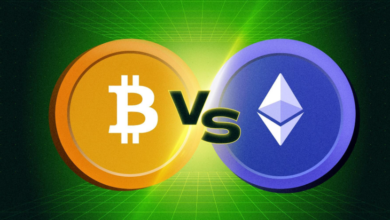Email Customer Journey Strategies for Better Retention

In the realm of digital marketing, email remains a powerful tool for fostering customer loyalty and driving retention. By strategically mapping the email customer journey—spanning awareness, consideration, purchase, and retention—businesses can craft campaigns that nurture long-term relationships with customers. The retention phase, in particular, is critical for transforming one-time buyers into loyal advocates, whether in B2B or B2C contexts. By aligning email strategies with customer needs and behaviors, marketers can boost engagement, reduce churn, and maximize lifetime value. This article outlines key strategies for leveraging the email customer journey to enhance retention, offering practical insights to create impactful, customer-centric campaigns.
Understanding Retention’s Role in the Email Journey
Retention is the linchpin of the email customer journey, focusing on maintaining engagement after a purchase to encourage repeat business and advocacy. Unlike earlier stages—awareness, which sparks interest; consideration, which nurtures leads; or purchase, which drives conversions—retention aims to build lasting relationships. Emails in this stage, such as thank-you messages, onboarding guides, or loyalty offers, reinforce the value of the brand, ensuring customers return.
For example, a B2C retailer might send a post-purchase email with product care tips to enhance the customer experience, while a B2B software provider could offer a personalized onboarding sequence to ensure clients maximize platform benefits. Defining retention goals—such as increasing repeat purchases or reducing churn—sets the foundation for effective email strategies. By understanding retention’s role, marketers can design campaigns that align with customer expectations, fostering loyalty at every touchpoint.
See also: 5 Key Benefits of NAICS Consulting For Your Business
Leveraging Data to Inform Retention Strategies
Data is the cornerstone of retention-focused email strategies, providing insights into customer behaviors and preferences. Quantitative metrics, such as open rates, click-throughs, and repeat purchase rates from email platforms, reveal how customers engage post-purchase. For instance, a B2C brand might notice high engagement with loyalty discount emails, indicating a preference for incentives, while a B2B vendor could see strong interaction with usage tips, suggesting a need for educational content.
Qualitative data, gathered through surveys or feedback forms, uncovers motivations and pain points. A B2C customer might express appreciation for personalized offers, while a B2B client could value regular account updates. Social listening tools can capture sentiment on platforms like Twitter, revealing how customers perceive post-purchase emails.
By combining these insights, marketers can craft retention emails that resonate. For example, a B2C retailer might use purchase data to send tailored product recommendations, while a B2B vendor offers industry-specific tips based on client feedback. This data-driven approach ensures emails deliver value, strengthening customer relationships and boosting retention.
Designing Retention-Focused Email Touchpoints
Retention emails must be carefully designed to engage customers at key post-purchase moments. Mapping these touchpoints ensures each email serves a purpose, from reinforcing satisfaction to encouraging repeat engagement.
Immediately after a purchase, thank-you emails set a positive tone. A B2C retailer might thank a customer for their order and include a discount code for a future purchase, while a B2B vendor could provide a welcome message with access to support resources. Onboarding emails are critical, particularly in B2B, where a software provider might send a series guiding clients through setup and best practices. In B2C, a fitness brand could share workout tips for a newly purchased product.
Loyalty emails, such as exclusive offers or rewards program updates, maintain engagement over time. For instance, a B2C brand might invite customers to join a loyalty program, while a B2B vendor offers priority support for long-term clients. By mapping these touchpoints, marketers ensure emails are timely and relevant, driving retention through consistent value delivery.
Personalizing Emails to Build Loyalty
Personalization is a powerful driver of retention, as customers expect emails tailored to their needs and behaviors. Leveraging CRM data and AI tools, marketers can create emails that feel personal, increasing engagement and loyalty.
For example, a B2C retailer might use purchase history to send recommendations for complementary products, such as suggesting a phone case after a smartphone purchase. In B2B, a vendor could send a client-specific report highlighting platform usage, reinforcing value. Dynamic content, like including a customer’s name or referencing past interactions, enhances relevance.
Timing is crucial for personalization. Marketing automation platforms can trigger emails based on behavior, such as sending a re-engagement email to a B2C customer who hasn’t purchased in 90 days or a B2B client who hasn’t logged into a platform recently. Privacy compliance, such as adhering to GDPR, ensures data is used transparently, building trust that fosters loyalty. Personalized emails strengthen customer connections, reducing churn and encouraging repeat engagement.
Testing Emails to Optimize Retention
Testing is essential for refining retention emails and maximizing their impact. A/B testing allows marketers to experiment with elements like subject lines, content, or send times to identify what drives engagement.
For instance, a B2C brand might test two subject lines for a loyalty offer, finding that a benefit-focused approach increases opens. In B2B, a vendor could test email frequency, discovering that monthly updates resonate more than weekly ones with busy clients. AI tools can analyze thousands of variations, providing real-time insights to optimize performance.
Behavioral triggers enhance testing. A B2C retailer might test re-engagement emails sent at different intervals, identifying the optimal timing for lapsed customers. In B2B, testing content types—like case studies versus usage tips—can reveal what keeps clients engaged. Regular analysis of metrics, such as click-throughs or retention rates, ensures emails evolve with customer preferences, sustaining long-term engagement.
Integrating Email with the Broader Customer Journey
Retention emails are most effective when integrated with other channels, creating a cohesive customer experience. A B2C customer receiving a post-purchase email should find consistent messaging on the brand’s website or social media, while a B2B client clicking an email link expects a landing page that aligns with the email’s content.
Integrated platforms, like CRM systems or marketing automation tools, facilitate this alignment. A B2C retailer can track email interactions to tailor website recommendations, while a B2B vendor uses CRM data to align emails with account management touchpoints. Cross-channel data, such as social media engagement, informs retention strategies, ensuring emails complement broader efforts.
Regular audits prevent discrepancies, such as mismatched offers, that could erode trust. By integrating email with channels like social media or customer support, marketers create a seamless journey that reinforces loyalty and drives repeat engagement.
Addressing Post-Purchase Pain Points
Pain points in the retention phase, such as irrelevant emails or lack of support, can increase churn. Mapping the email journey helps identify these barriers through data and feedback. For example, a B2C retailer might notice low engagement with generic newsletters, prompting a shift to segmented, interest-based emails. In B2B, a vendor could find that clients need more onboarding support, leading to a dedicated email series.
Solutions must be customer-focused. A B2C brand might offer an email preference center, allowing customers to choose content types or frequency, while a B2B vendor streamlines support access through email links. Testing these solutions, such as A/B testing email designs, validates their effectiveness in reducing pain points.
Customer feedback, gathered through surveys or support interactions, provides qualitative insights to refine retention emails. By addressing barriers, marketers create email experiences that feel valuable, encouraging long-term loyalty and reducing churn.
Fostering Advocacy Through Engagement
Retention emails can transform loyal customers into brand advocates, amplifying retention efforts. Emails that encourage advocacy—such as referral programs or review requests—extend the customer journey beyond repeat purchases. A B2C retailer might invite customers to share a referral code, offering rewards for both parties, while a B2B vendor could request a case study testimonial from a satisfied client.
Social sharing is another powerful tool. A B2C brand might include social media buttons in emails, encouraging customers to share their purchase, while a B2B vendor invites clients to post about their success on LinkedIn. Personalized advocacy emails, tailored to customer history, increase participation. For example, a B2C brand might target frequent buyers with referral incentives, while a B2B vendor focuses on long-term clients for testimonials.
Feedback loops, such as post-interaction surveys, ensure advocacy emails resonate. By fostering advocacy, marketers amplify retention, turning loyal customers into brand ambassadors who drive new conversions.
Adapting to Evolving Customer Expectations
The email customer journey must evolve to sustain retention in a dynamic market. Regular journey map updates, informed by metrics like engagement rates or feedback, ensure emails align with changing customer expectations. For instance, a B2C brand might adapt emails to include interactive elements like embedded videos, while a B2B vendor incorporates virtual demo links to meet new preferences.
Emerging trends, such as AI-driven personalization or sustainability-focused messaging, shape retention strategies. A B2C retailer might highlight eco-friendly practices in emails, while a B2B vendor emphasizes data security. Customer feedback ensures these adaptations remain customer-centric, maintaining relevance.
By treating the email journey as a dynamic tool, marketers create retention strategies that foster loyalty, reduce churn, and drive long-term engagement in an ever-evolving digital landscape.





